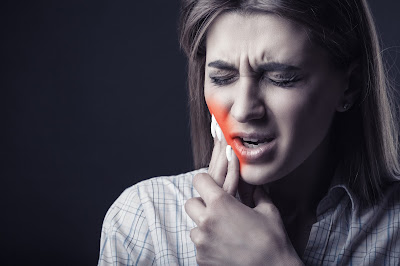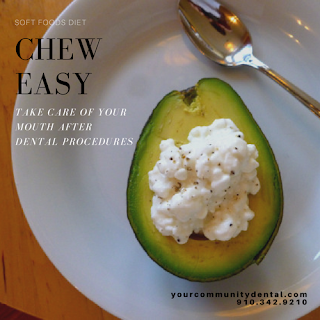Understanding Stomatitis: What You Need to Know
What is Stomatitis?
If
you’ve ever dealt with the pain of a canker sore or cold sore inside your mouth,
then chances are you’ve experienced stomatitis. Stomatitis is typically
considered to be a localized soreness within the mouth, and it can be found
anywhere from the gums to the lips to the sides of the cheeks.
While not considered life-threatening, Stomatitis can be painful
and it can affect your ability to eat, sleep, and even talk in certain cases.
Types and Symptoms
While Stomatitis is considered a general term, there are primarily two types which affect most people. These are canker sores and cold sores.
·
Canker
Sores - Canker sores are small ulcer-like lesions that can
develop on the inside of your mouth. They don’t typically form on your lips,
and you can’t pass them on to someone else. The ultimate cause of canker sores isn’t
certain, but there are a number of reasons one might appear. If you are under a
lot of stress or wear braces, you may be at higher risk. Also, some highly
acidic fruits such as pineapple, lemons, and tomatoes
can contribute to the formation
of this type of stomatitis.
Less
common are complex canker sores that tend to appear repeatedly and are usually
larger and more painful than regular canker sores. They can stick around for up
to a month and will sometimes leave a scar. This form is commonly due to a more
serious condition such as a vitamin deficiency or from ailments
such as Crohn's disease or low levels
of immunity.
·
Cold
Sores - Unlike canker sores, the cause of a cold sore is
definitively known. These fluid-filled blisters are a symptom of the Herpes
Simplex Virus (HSV1). They are extremely contagious and can be passed from
person to person through close contact. Cold sores generally last 2-4 weeks and
should heal completely without leaving a scar. There is no cure for HSV1 once
you contract it, but medications are available that can help to reduce the duration
and severity of the outbreaks.
General
mouth soreness can also be categorized as stomatitis. This type of soreness can
result from a number of circumstances including, but not limited to, burning
the inside of your mouth with hot liquid or food, biting your tongue, cheek or
lip, and dental issues such as gingivitis.
Treatment
How
to best treat Stomatitis in your mouth will ultimately depend on which type you
have. If you are suffering from canker sores, patience and time is typically
the best remedy. These sores, while uncomfortable, will not usually impede
every day eating and drinking and should clear up in one to two weeks’ time. If
you find you are in need of relief from the pain of a canker sore, placing a
dab of Benzocaine on the affected area can help. Benzocaine, or Ambesol as it
is commonly called, is a numbing gel that can be found at your local pharmacy.
If
you’re dealing with the discomfort of a cold sore, your treatment will be a bit
different. Because cold sores appear due to a viral infection, using an
anti-viral medication is typically what’s prescribed to speed up the recovery
process. You can get a prescription from your doctor or use an over-the-counter
product such as Abreva to shorten the overall healing time.
Stomatitis in Children
While
Stomatitis can be a mild irritant in adults, it can sometimes become much more
severe in children. When a child contracts the HSV1 virus for the first time,
the outbreak can occur throughout the mouth, not just on the lips. The sores
can be extremely painful and often times children will stop eating and drinking
because of the discomfort. Because of this, children suffering from viral
stomatitis should be closely monitored and drink plenty of fluids to ensure
they don’t become dehydrated.
Symptoms
typically last from a week to ten days and the child will then have the HSV1
virus for life. Although the virus commonly remains inactive after the initial
outbreak, it can reappear later in life as the common cold sore. No subsequent
occurrence will be as severe as the initial one.
Preventing Stomatitis
There
is no real cure for stomatitis, but there are some things you can do to help
prevent it from recurring as often. Making sure you are consuming enough B
vitamins can go a long way toward preventing future breakouts related to canker
sores. You should also monitor your intake of acidic and spicy foods as these
can exacerbate and increase the likelihood of developing mouth sores. Finally,
remember that proper oral hygiene will always go a long way towards ensuring
your mouth remains healthy and pain-free.
If you want to know more about Stomatitis you can always talk with your local dentistry, Your Community Dental at 910-342-9210.
-Julie
Mastbrook
Works Cited
Case-Lo, Christine.
“Stomatitis: Definition and Patient Education.” Healthline, Healthline
Media, 30 Nov. 2016, www.healthline.com/health/stomatitis.
Hansen , Bjarne Lühr, and
Philipp Skafte-Holm . “Stomatitis.” Stomatitis,
www.illchild.com/disease/stomatitis.
“Herpetic Stomatitis.” Nicklaus
Children's Hospital, www.nicklauschildrens.org/skin-and-rashes/herpetic-stomatitis.






Comments
Post a Comment